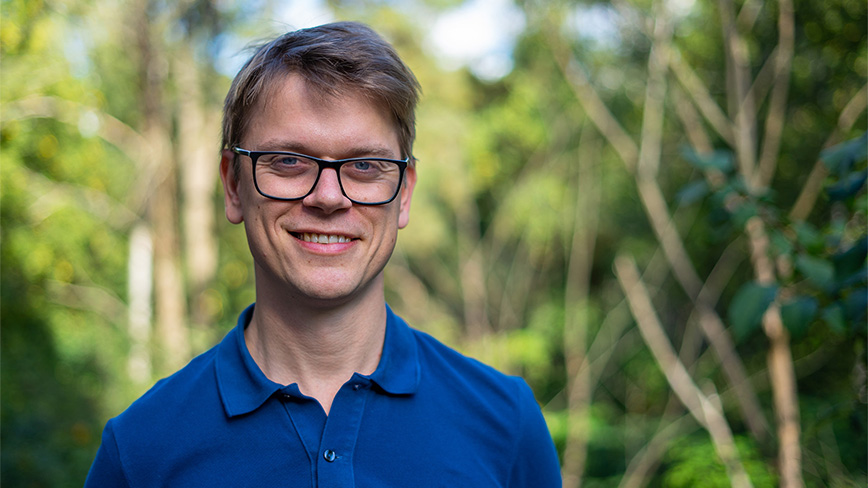CBH’s Tomas Rosén competes in research presentation

Researcher’s Grand Prix is a Swedish competition that has been running annually since 2012, where researchers compete by presenting their research in the most captivating way. On September 30, the competition comes to Stockholm and among the competitors is KTH researcher Tomas Rosén.
“I think that we researchers have a shared responsibility to be able to communicate the research carried out at our universities to the public.”
Tomas Rosén's is studying and developing processes for building structured materials from cellulose nanofibrils on a large scale. These are nature's own building blocks that build up the cell walls in plant cells. They can be efficiently extracted and reassembled into advanced green and sustainable materials by controlling their structure at the nanolevel.
“But the scale-up to industrial-scale processes requires a lot of understanding of how fibrils behave in process-related flows, which is what my research is about,” says Tomas Rosén.
"I'm really nerdy"
In order to understand the behavior of the fibrils, the researchers must be able to observe structures of nanofibrils in flows, which they do by studying the scattering of focused X-ray light directed through the flow. To generate these X-rays a synchrotron is required, a particular type of particle accelerator, such as MAX IV in Lund.
“Much of my research involves carrying out such experiments and comparing them with hypotheses that we set up with numerical simulations. The behavior of non-spherical particles in flows is something I'm really nerdy about and have already spent a large part of my life researching. You might think it sounds very niche, but I see so many areas of application and really think it's the most exciting thing out there.”
It may be an exciting field of research, but explaining one's research in the short time (four minutes) that the format of the Researcher’s Grand Prix requires will be a challenge, according to Tomas Rosén.
“Explaining my research to people is probably one of the greatest things I know. If someone asks me, I can easily spend hours talking about elongated particles in flows. I also see it as a fantastic opportunity to inspire young people to choose a science education and make them understand what cool things you can work with while contributing to a better world for all of us.”
A shared responsibility
Tomas Rosén believes that all researchers have a shared responsibility to be able to communicate the research carried out at our universities to the public. Above all, he thinks it is important to help people understand how scientific research is done, and why, for example, researchers cannot determine results with absolute one hundred percent certainty.
“I really believe it is more important than ever in the situation we humans have now created for ourselves with the climate crisis, and where decisive political decisions based on research must be made very quickly. Despite that, I think I see a tendency towards increased skepticism towards the research community, and I think part of the problem lies in the fact that effective pedagogy and reach-out activities are unfortunately often too low a priority in today's academic climate,” says Tomas Rosén.
How do you think the competition will go for you?
“I guess I have some idea who my fellow competitors are, and to be honest the starting field seems to be really strong this year with some fantastic research communicators. We'll see how it goes, but above all I hope for a festive event and that we all succeed in reaching the young people in the audience!”
Text: Jon Lindhe
